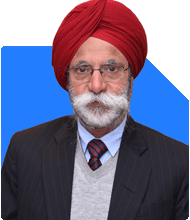Planning My Finances: Clearing Debt & Building Savings With 60k Salary, 32 Lakh Home Loan at 35
Ramalingam Kalirajan |8128 Answers |Ask -Follow
Mutual Funds, Financial Planning Expert - Answered on Feb 06, 2025
He has an MBA in finance from the University of Madras and is a certified financial planner.
He is the director and chief financial planner at Holistic Investment, a Chennai-based firm that offers financial planning and wealth management advice.... more

No savings, 60k per month salary, 32lakhs home loan at age 35, Need a plan and sample portfolio to clear the debt on priority, accumulate savings and investments
You have no savings currently.
You have a home loan of Rs. 32 lakhs at age 35.
Your priority is to clear the debt first.
You also want to build savings and investments.
This situation is challenging, but you can achieve financial stability with the right plan.
Steps to Clear Your Home Loan Faster
Increase EMI Amount Gradually
Your salary will likely increase over time.
Whenever your salary increases, raise your EMI amount.
Even a 10% increase in EMI can reduce the tenure significantly.
Make Part Prepayments
Use any bonus or extra income to make prepayments.
Prepaying even small amounts reduces the principal and interest.
Aim to prepay at least 5-10% of the loan amount every year.
Switch to a Lower Interest Rate
Check if your bank offers lower interest rates to new customers.
If yes, ask for a rate reduction on your loan.
If your bank does not agree, consider transferring the loan to another bank with lower rates.
Avoid Taking New Loans
Do not take personal loans or credit card debt.
Keep your focus on clearing the home loan first.
Building an Emergency Fund
Before investing, save at least six months of expenses.
This ensures that unexpected expenses do not disrupt your finances.
Keep this fund in a liquid form like a savings account or FD.
Allocating Your Salary Wisely
Step 1: Fixed Expenses (EMI, Rent, Bills, etc.) – 50%
Your EMI should not exceed 40% of your salary.
Try to reduce unnecessary expenses like dining out or subscriptions.
Step 2: Savings and Investments – 30%
10% for an emergency fund until you save six months’ expenses.
10% for debt repayment through extra EMI or prepayment.
10% for long-term investments.
Step 3: Lifestyle and Leisure – 20%
Entertainment, shopping, and hobbies should fit within this limit.
Avoid spending beyond this to ensure financial discipline.
Investment Plan to Build Wealth
Start Small, Grow Gradually
Start investing with a small monthly amount.
As your salary grows, increase your investment amount.
Even Rs. 5,000 per month can create long-term wealth.
Diversified Mutual Fund Portfolio
Invest in a mix of large-cap, flexi-cap, mid-cap, and small-cap funds.
Avoid investing all your money in one type of fund.
A well-balanced portfolio ensures growth and stability.
Debt Funds for Short-Term Goals
Keep funds for near-term needs in short-duration debt funds.
Debt funds provide stability and better returns than savings accounts.
Avoid ULIPs, Endowment Plans, and Traditional Insurance
Insurance and investment should be separate.
Traditional insurance gives low returns and high costs.
Invest in mutual funds for better wealth creation.
Insurance for Financial Protection
Health Insurance is a Must
A medical emergency can drain your savings.
Get a health insurance policy with at least Rs. 10 lakh cover.
Consider a family floater policy if you have dependents.
Term Insurance for Life Cover
If you have dependents, get a pure term life cover.
The sum assured should be at least 10-15 times your annual income.
Avoid investment-linked insurance policies.
Smart Ways to Increase Savings
Reduce Unnecessary Expenses
Track your spending to identify wasteful expenses.
Cut down on subscriptions, dining out, and impulse shopping.
Use discount offers and cashback options wisely.
Utilize Tax-Saving Options
Invest in tax-saving instruments under Section 80C.
Choose ELSS funds for better returns compared to traditional options.
Claim deductions for home loan interest and principal repayment.
Utilize Any Extra Income Wisely
Bonuses, gifts, and incentives should be used for savings or prepayments.
Avoid spending extra income on luxury purchases.
Mindset for Financial Success
Be Patient and Consistent
Wealth creation takes time.
Keep investing consistently without stopping.
Even small amounts will grow into large sums over time.
Review Your Plan Regularly
Assess your finances every six months.
Adjust your strategy based on salary hikes and changing needs.
Keep increasing investments as your income grows.
Stay Disciplined
Avoid unnecessary loans and credit card debts.
Stick to your budget and financial plan.
The right habits will lead to financial freedom.
Final Insights
Your priority is to clear the home loan early.
Build an emergency fund before aggressive investments.
Invest systematically for long-term wealth creation.
Insurance is necessary for financial security.
Keep expenses in control to save more.
Stay patient and follow the plan with discipline.
You are on the right track. Consistency and smart financial decisions will help you achieve financial independence.
Best Regards,
K. Ramalingam, MBA, CFP,
Chief Financial Planner,
www.holisticinvestment.in
https://www.youtube.com/@HolisticInvestment
You may like to see similar questions and answers below
Omkeshwar Singh | Answer |Ask -Follow
Head, Rank MF - Answered on Feb 18, 2022
Ramalingam Kalirajan |8128 Answers |Ask -Follow
Mutual Funds, Financial Planning Expert - Answered on Jul 19, 2024
Ramalingam Kalirajan |8128 Answers |Ask -Follow
Mutual Funds, Financial Planning Expert - Answered on Jul 30, 2024
Samraat Jadhav |2232 Answers |Ask -Follow
Stock Market Expert - Answered on Mar 24, 2025
Dr Nagarajan Jsk |296 Answers |Ask -Follow
NEET, Medical, Pharmacy Careers - Answered on Mar 24, 2025
T S Khurana |427 Answers |Ask -Follow
Tax Expert - Answered on Mar 24, 2025
T S Khurana |427 Answers |Ask -Follow
Tax Expert - Answered on Mar 24, 2025
T S Khurana |427 Answers |Ask -Follow
Tax Expert - Answered on Mar 24, 2025
T S Khurana |427 Answers |Ask -Follow
Tax Expert - Answered on Mar 24, 2025
Anu Krishna |1568 Answers |Ask -Follow
Relationships Expert, Mind Coach - Answered on Mar 24, 2025
Anu Krishna |1568 Answers |Ask -Follow
Relationships Expert, Mind Coach - Answered on Mar 24, 2025
Anu Krishna |1568 Answers |Ask -Follow
Relationships Expert, Mind Coach - Answered on Mar 24, 2025
Dr Nagarajan Jsk |296 Answers |Ask -Follow
NEET, Medical, Pharmacy Careers - Answered on Mar 24, 2025










.jpg)









